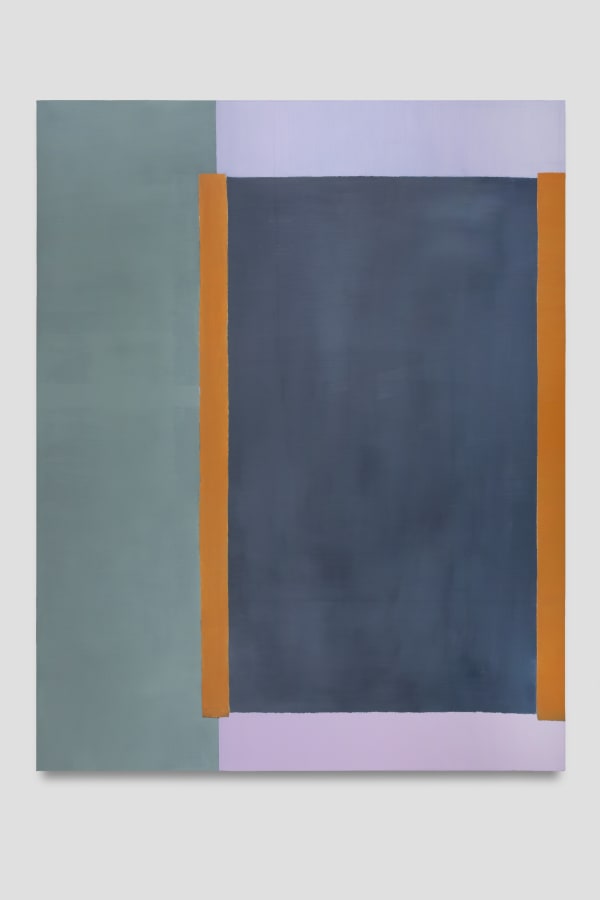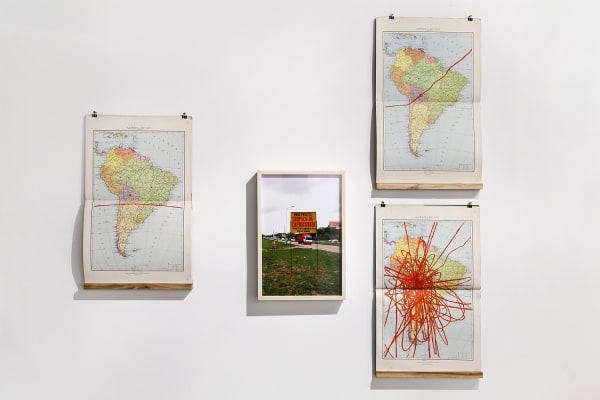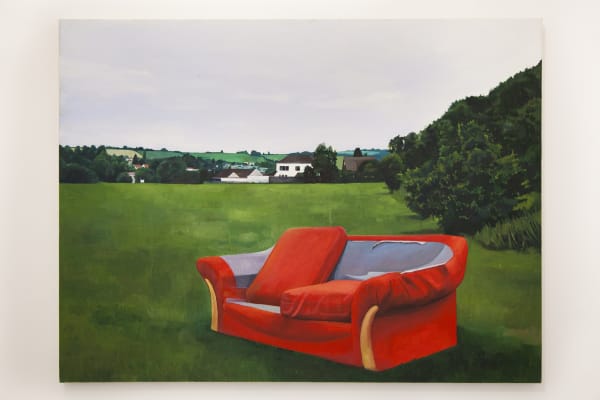Pictorial Approaches
The exhibit portrays novel lines of research for these artists where painting is the outlet for their creation processes.
In the body painting of Alexandre Mury, photography is the media to record performance acts that address several situations, sceneries and personages in an insightful and sprightly manner. In his work, Mury arrays a lineup of trite and ironic elements, with which he develops a particular language that flirts with kitsch, indulges in Pop culture, and whereby he plunges into artistic freedom.
Frederico Filipi looks into disordered relationships of order, especially in connection with the formation of South America, departing from the analysis of an image where painting is one of the techniques utilized to construct his text and shape up his research.
Joana Cesar brings works that are conceived by overlapping layers of paper sheet from billboards and the city walls, in addition to her own archive of personal images. On each canvas, painting frames a gesture that takes in paints, sheets, glue and assembled objects to be performed. There, actual recollections and make-believe, clear but usually ill-defined, entwine, in a toing and froing movement, either ultimately emerging on the surface or being intentionally concealed.
Rodrigo Bivar’s paintings study color and geometry, with his strokes bearing traces of his path and relationship with painting. Bivar on screen thoroughly plans out his research and experiences with the urban landscape, utilizing strokes, textures and colors as witnesses to the scenes encountered. This pictorial locale, for all intents and purposes solemn and austere, is a careful, brief and intense way to look at the city, its details and nuances.
The work of Rodrigo Freitas is part of a series of paintings that propose the reinsertion of consumption objects through image. His research is geared towards thinking an exchange and circulation system whereby the excess itself is assimilated as a product. The image of the couch disposed of in the landscape allows for a friction between the borders of public and private, restraint and transgression, spending and saving.
By way of the pictorial practice, employing strikingly dissimilar methods, dialogs are assembled, touching on issues such as space, memory, order, time, and relationship with the world and the other.









